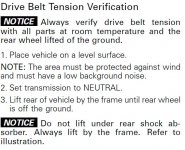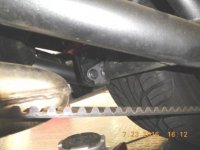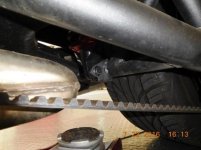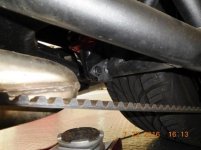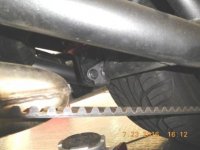Wildrice
New member
Hello Spyder lovers,
My Gates Krikit belt tension gauge arrived today---thus on my 2015 F3's I do reading on the top & bottom of the drive belt--both at approx 240 lbs. Following a video by an english accent gentleman--he shows me the best way. This doesn't involve any changing of tension or alignment on my part. My concern is that after jacking up the rear end on the rear shock post--blocking the front wheels & running probably 10-15 mph stationary vehicle with lots of error code lights--I shut it down--take another reading & it's at 190lbs both sides of belt--I lowers the F3's to the ground without moving it & it still reads approx 195 lb. I do need to mention that I removed the Baker built upper roller in the process--but I estimate the additional roller to be approx 3-4 lbs load at most. haven had the opportunity to test ride. My belt alignment may get a fine tuning as the space is closer on the spyder rear wheel than the outside but still not touching the driven pulley.
Your thoughts ??
Darrell
My Gates Krikit belt tension gauge arrived today---thus on my 2015 F3's I do reading on the top & bottom of the drive belt--both at approx 240 lbs. Following a video by an english accent gentleman--he shows me the best way. This doesn't involve any changing of tension or alignment on my part. My concern is that after jacking up the rear end on the rear shock post--blocking the front wheels & running probably 10-15 mph stationary vehicle with lots of error code lights--I shut it down--take another reading & it's at 190lbs both sides of belt--I lowers the F3's to the ground without moving it & it still reads approx 195 lb. I do need to mention that I removed the Baker built upper roller in the process--but I estimate the additional roller to be approx 3-4 lbs load at most. haven had the opportunity to test ride. My belt alignment may get a fine tuning as the space is closer on the spyder rear wheel than the outside but still not touching the driven pulley.
Your thoughts ??
Darrell

